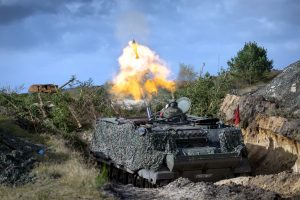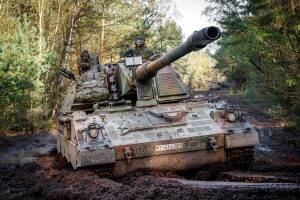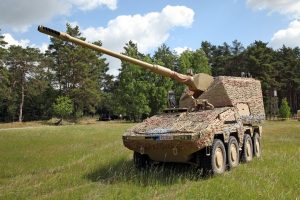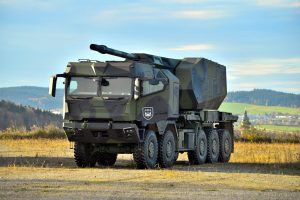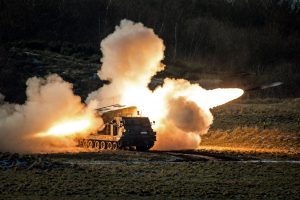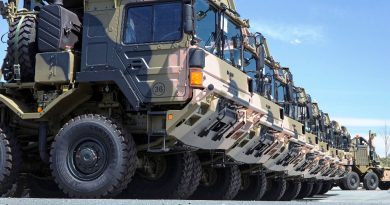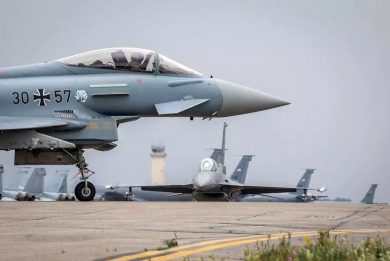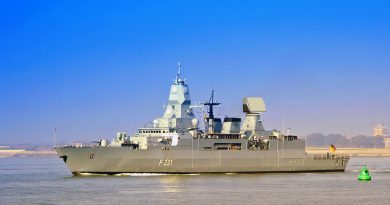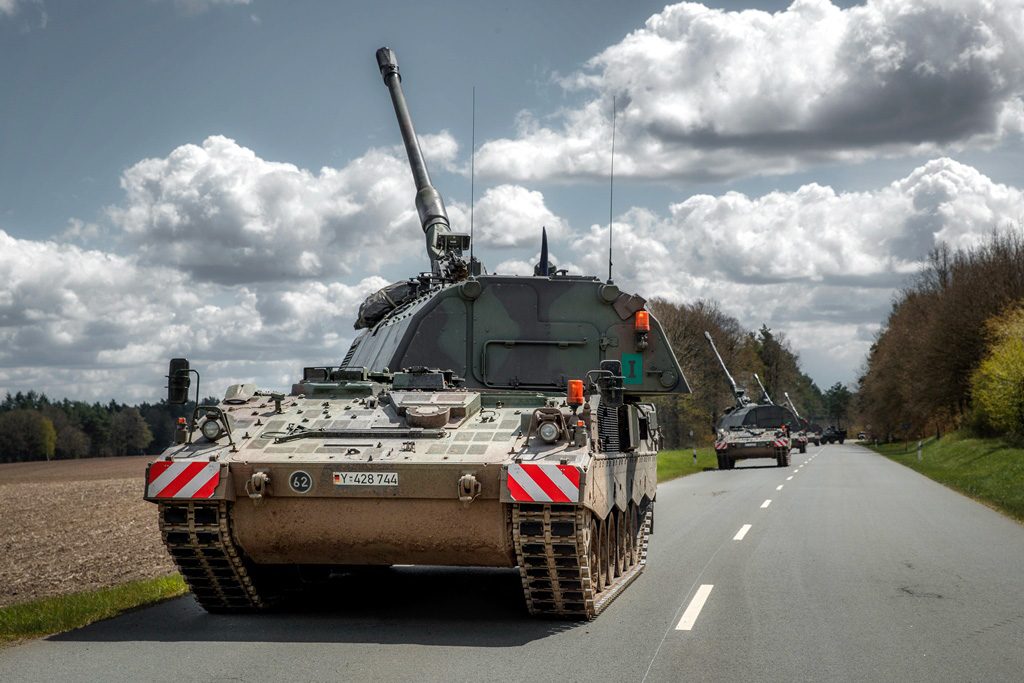
Future Artillery Conference: Germany details future acquisitions
By Paolo Valpolini
While last October the German contribution to the Future Artillery Conference, organised by Defence IQ, came from the concept and capabilities development branch of the Bundeswehr, during the 2021 edition, once again on-line due to COVID considerations, it was the turn of the acquisition branch to detail what are the German Army plans to improve its capabilities in the indirect fire field.
“We are considering upgrading or replacing systems in the short, medium and long ranges,” Colonel Jürgen Schmidt, head of the Combat Directorate at the Federal Office of Bundeswehr Equipment, Information Technology and In-Service Support (BAAINBw), based in Koblenz, told the audience.
Nowadays the German artillery fields three effectors: the Tampella 120 mm smoothbore mortar, which dates from the late 1960s, and is either towed by the Wolf, the G-Wagen based 4×4, or installed on legacy M113 tracked vehicles; the PzH 2000 155/52 mm self-propelled tracked howitzer; and the MLRS multiple rocket launcher (MARS-II in the German Army). While the former needs replacement, the two latter systems will receive a Mid-Life Update, which will be mostly aimed at improving electronics and software, and replacing obsolescence.
“Currently our Army fields artillery units only at Brigade level,” Col. Schmidt said, while in the future we are looking at having a divisional artillery element.
As Lieutenant Colonel Konrad Josef Leitner explained in his briefing in October 2020, each one of the three divisions forming the German Army, two armoured, the 1. Panzerdivision and the 10. Panzerdivision, and one Rapid Deployment, the Division Schnelle Kräfte, will receive an artillery regiment. This will remain at Division level in peacetime, while in operation it would split to provide direct fire support task forces to the brigades, as well as one to the division.
This will require new assets to be procured, and in December 2020 the Bundeswehr issued the “Zukünftiges System Indirektes Feuer mittlerer Reichweite” (Future medium range indirect fire system) document. “This contains over 100 requirements split among kill criteria, which have to be realised in any case, must criteria and shall criteria,” Col. Schmidt explained. EDR On-Line understood that it will be mostly a competition between German companies, the BAAINBw officer saying however that international participation would be welcome, the acceptance of kill criteria being obviously a pre-requisite for cooperation.
At Division level the Bundeswehr is considering its artillery to be used to reinforce the main line of effort; “If the centre of main effort changes the Divisional Artillery force has to move quickly, shifting its support to another Brigade. To ensure the fast redeployment over long distances one of the kill requirement is thus to have a wheeled platform.”
Range is obviously an issue; the speaker showed a slide correlating calibre and dispersion, and underlining that maximum accuracy with a standard shell of 155 mm calibre is obtained at 15 km range, the higher the calibre the lesser the dispersion at longer ranges. It is however not the intention of the Bundeswehr to go for a bigger calibre. “To reach 70 km with a 155 mm gun and obtain high precision you need to have a sub-calibre shell, a small ammo payload and a guidance kit, as it has been done in the Vulcano round. Its top charge can be used in the PzH 2000 remaining within the approved limits of operation,” he states. The achievable ranges will be the lowest value of the requirements, but according to the German officer covering ranges from 3 to 100 km would require modification to the weapon system as well as a new modular propellant charge system. “This will raise the cost of such an ammunition family, bringing it not far away from that of a rocket,” Col. Schmidt underlined. The latter allows reaching a long distance in an easiest way, as the acceleration time is not limited by the length of the barrel. He mentioned that the industry is carrying out a research on a 60 calibre 155 mm barrel; “we support it through a Research and Technology study, but the timeframe and the budget does not allow a parallel development,” hence it will not be possible to use such cannon on the wheeled medium range system. No comment were made on the European Common Indirect Fires System programme.
The German industry is already at work to fulfil Bundeswehr requirements; according to the latest information available, Rheinmetall should propose a system based on its new HX3 truck, unveiled recently, while Krauss-Maffei Wegmann developed years ago a Boxer-based solution, that is probably being adapted to new requirements. “Both will feature an unmanned autonomous turret. The solution based on the Boxer has a higher protection level, while the truck-based solution provides a better visibility for the crew. Another difference will be in the life-cycle cost. All these aspects will be evaluated in a competition,” Col. Schmidt said. EDR On-Line understood that an RfP should be issued in 2022.
The autonomous turret with autoloader aims at reducing the system crew from five soldiers, needed on the PzH 2000, to a two-three soldiers crew on new wheeled howitzers, the intention being to then reduce manpower also on the tracked SP howitzer. “The overall number of soldiers that form the German Armed Forces is currently limited, therefore with the fielding of additional howitzer systems we have to reduce the crew. We must however consider how long a smaller crew can stand the 24 hours combat day. Will it be necessary to have a second crew in reserve? We are currently working on that issue,” he said.
According to Col. Schmidt the Bundeswehr aims at acquiring 120 new wheeled medium-range howitzers. Merging this information with that obtained at the October 2020 conference, it is unclear how these will be deployed. [1]
Divisional
Artillery will also be strengthened by further 30 multiple-launch rocket
systems, that will add to the 38MLRS tracked systems currently in service.
“Here too we are looking for a wheeled system, and we will start working on the
long range issue in two years time,” Col. Schmidt told the Defence IQ Future
Artillery Conference audience. No details were therefore provided in terms of
type of launcher and munitions.
As for
the replacement of the current heavy mortar system, Germany is considering a
wheeled solution, the Fuchs 6×6 platform being under evaluation. “A decision on
the mortar type will be taken at a later date,” Col. Schmidt added, saying that
the Bundeswehr aims at acquiring 100 such new systems. In one of the slides
shown during the presentation a single-barrel turreted mortar was depicted,
however this might not necessarily be indicative of a possible German choice
for such a solution.
[1] As Brigade Artillery should be based on the PzH 2000, we can think of those tracked systems being employed in the Brigades belonging to the two Armoured Divisions. It would make sense for the Rapid Deployment Division to field a more mobile system, hence the new medium range wheeled howitzer. In that case we would have three Artillery battalions with that system, plus the three Divisional Artillery units; that will include also rocket launchers, which might bring the total close to the 120 wheeled howitzers mentioned in the text. [Author’s note]
Photos courtesy Bundeswehr, KMW, Rheinmetall

